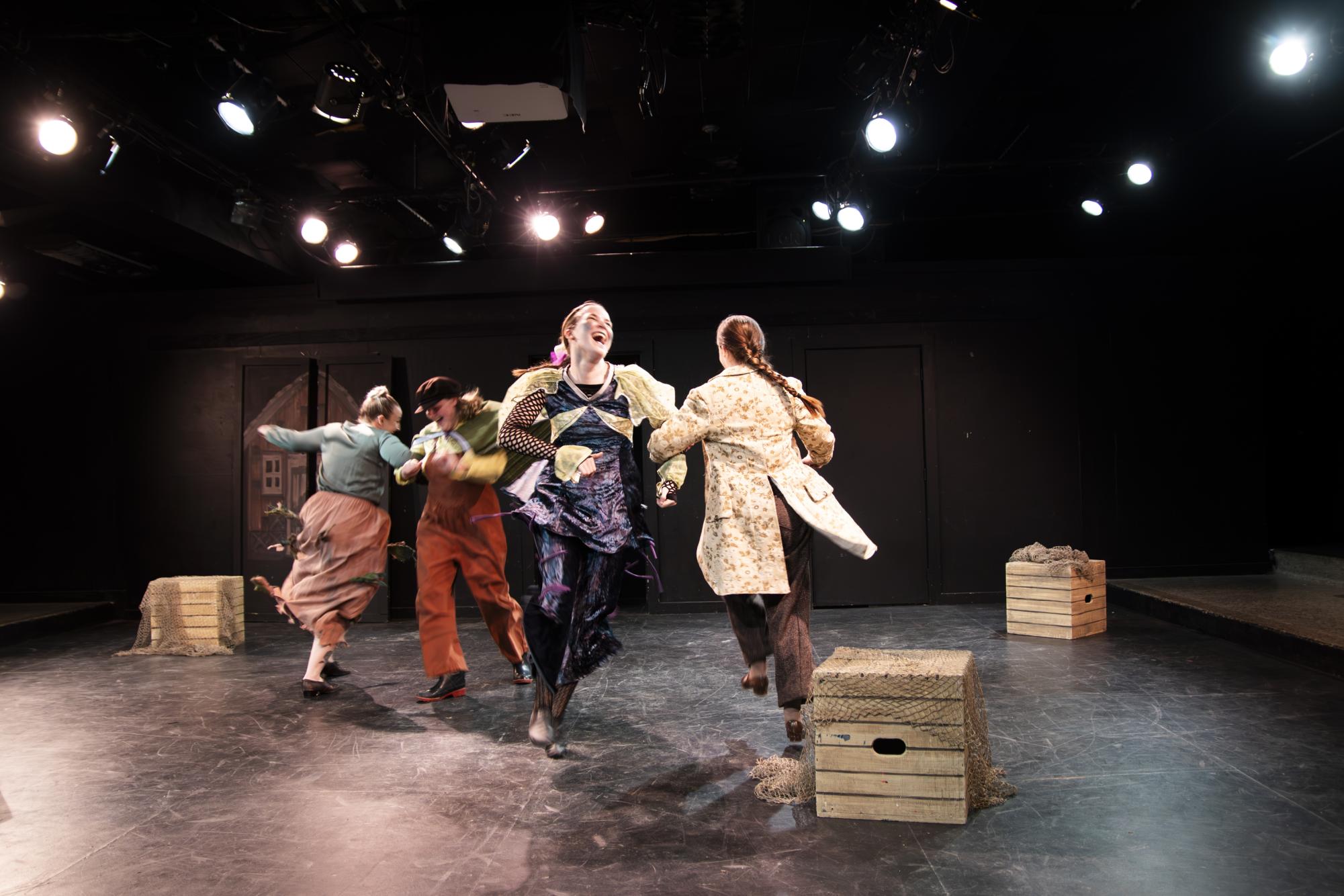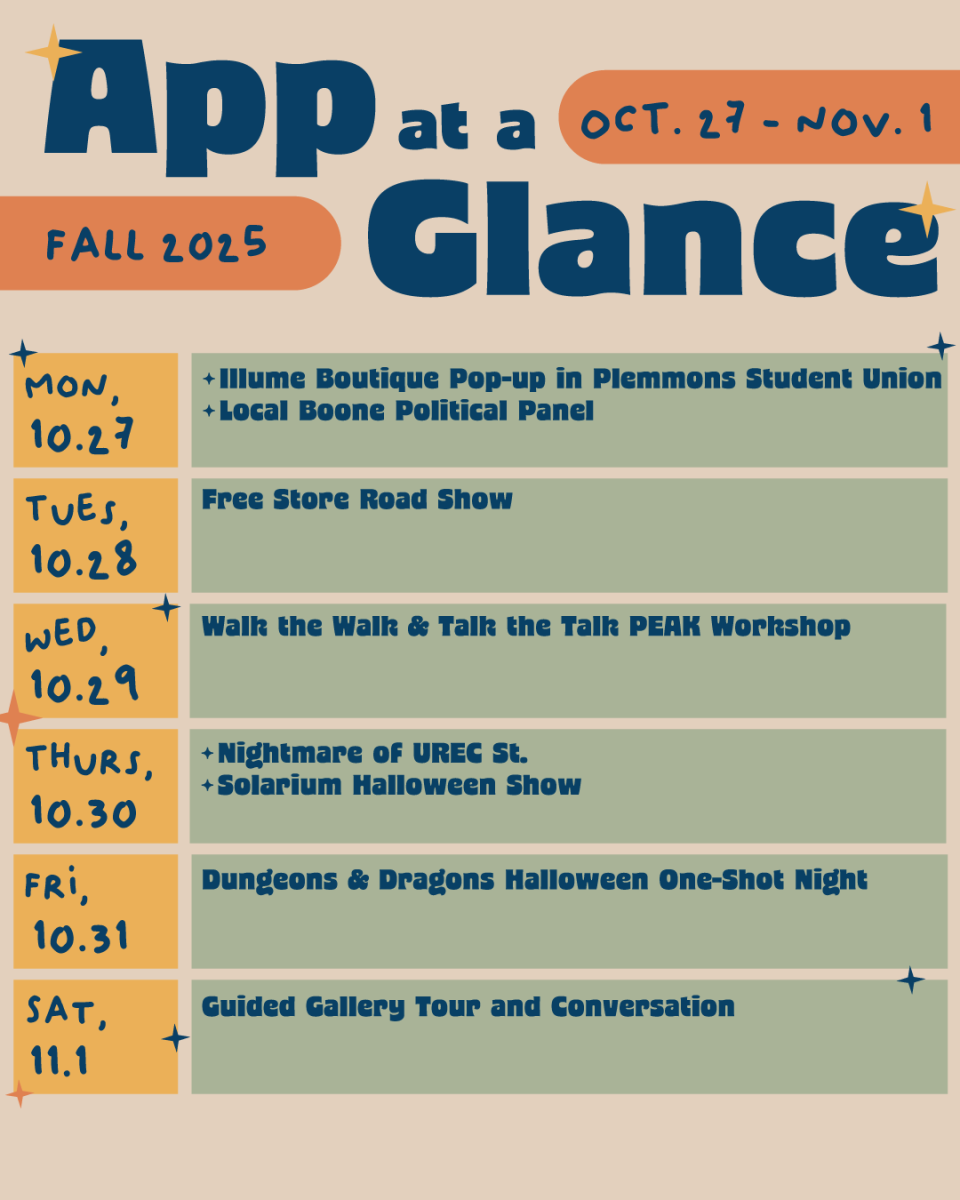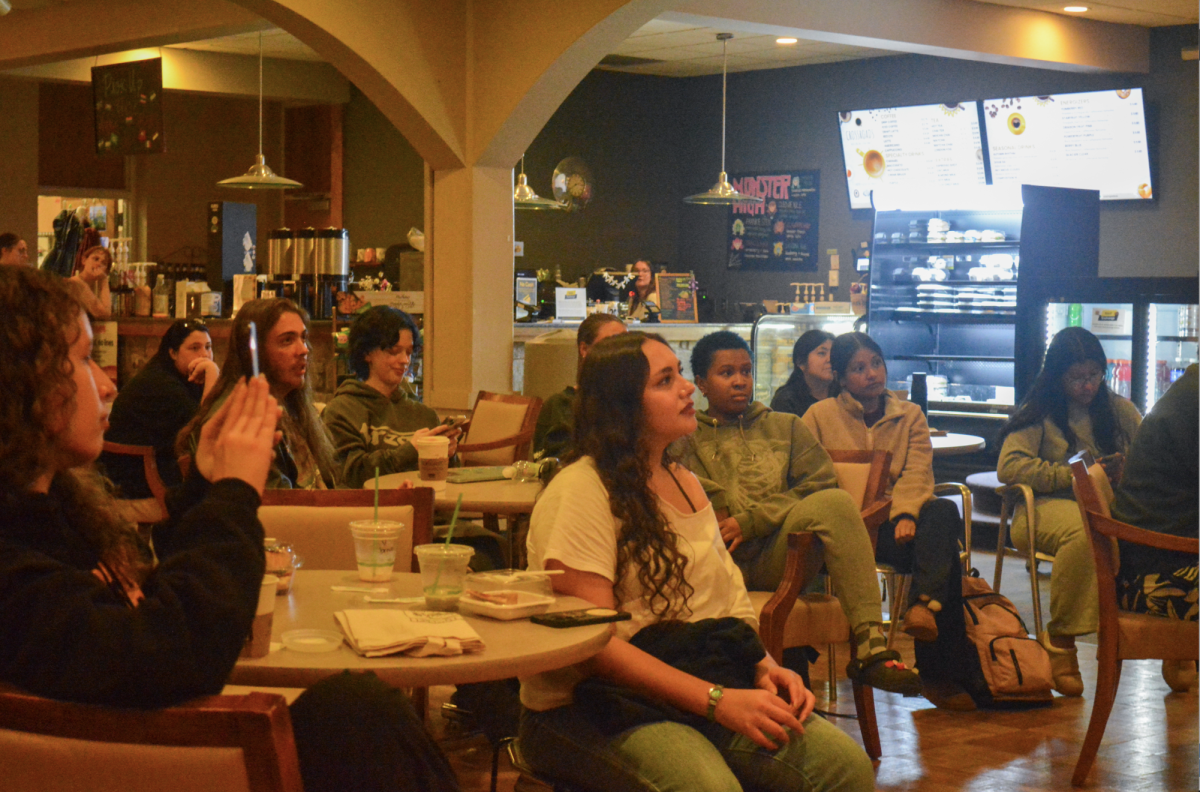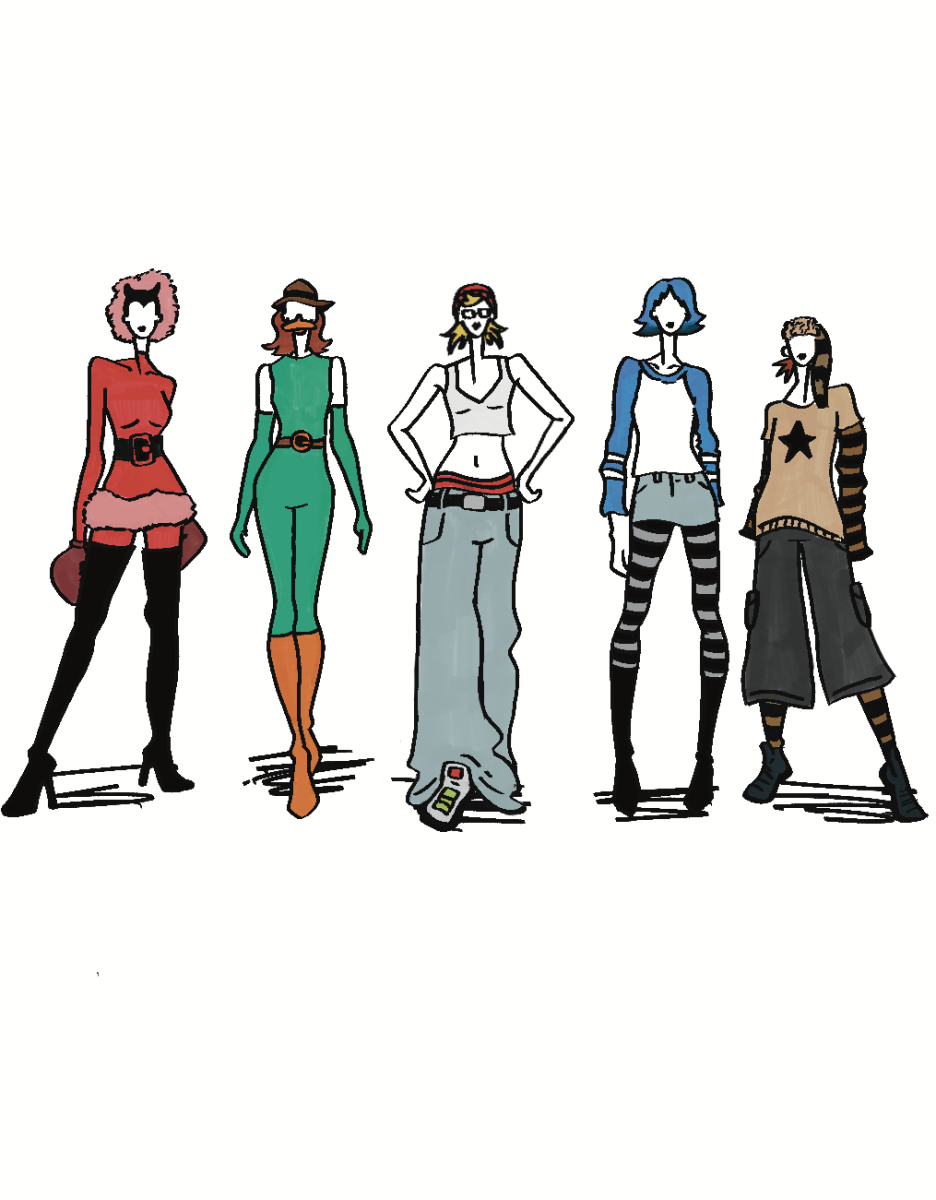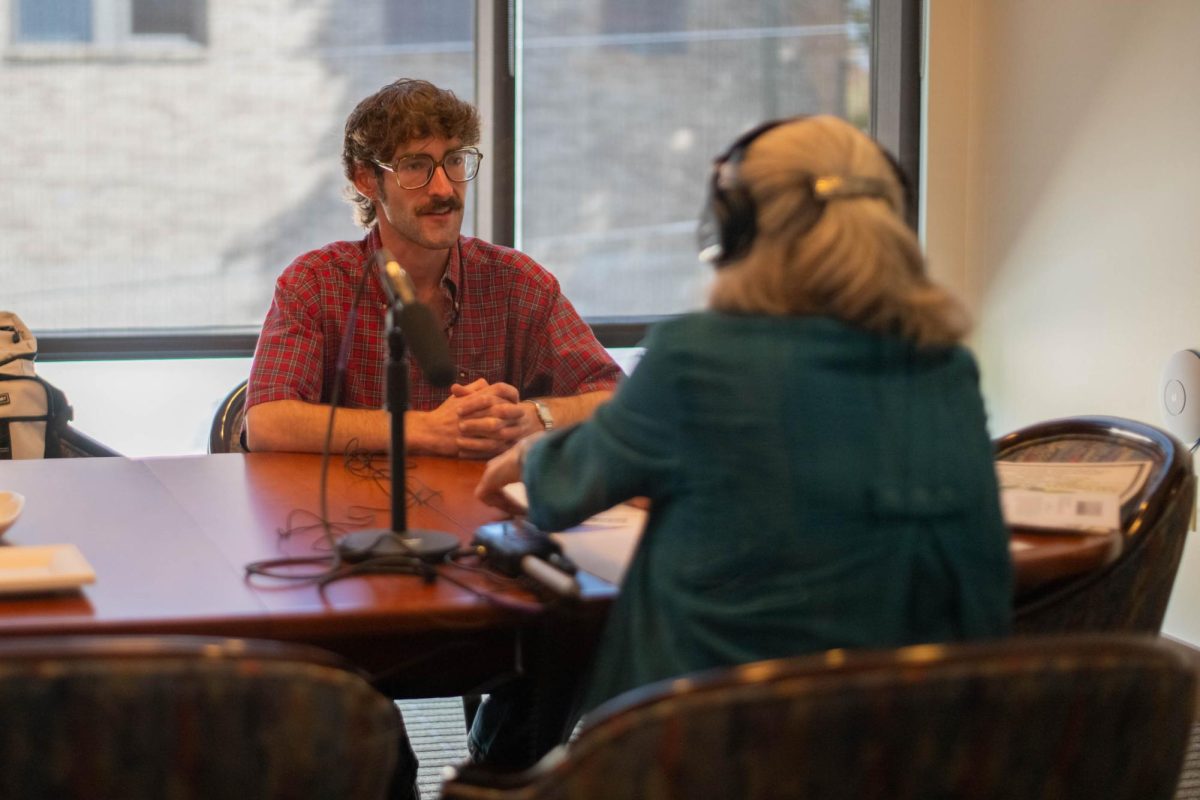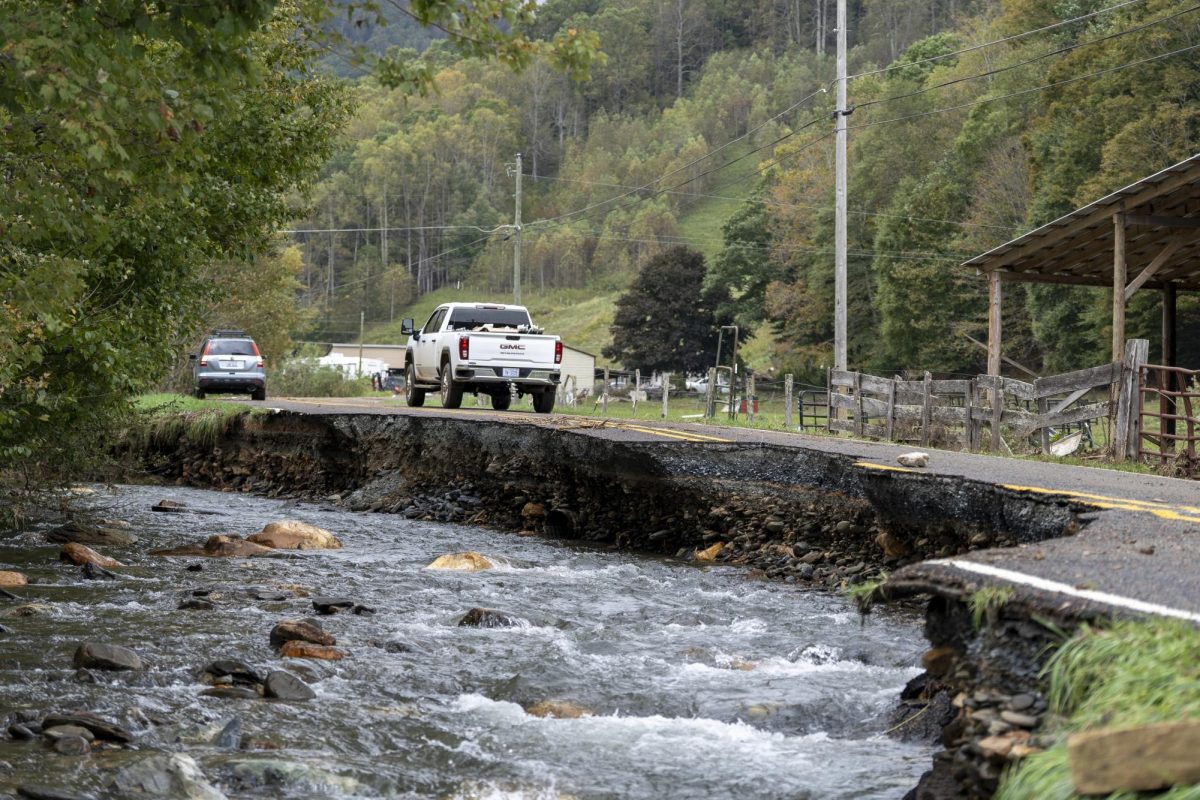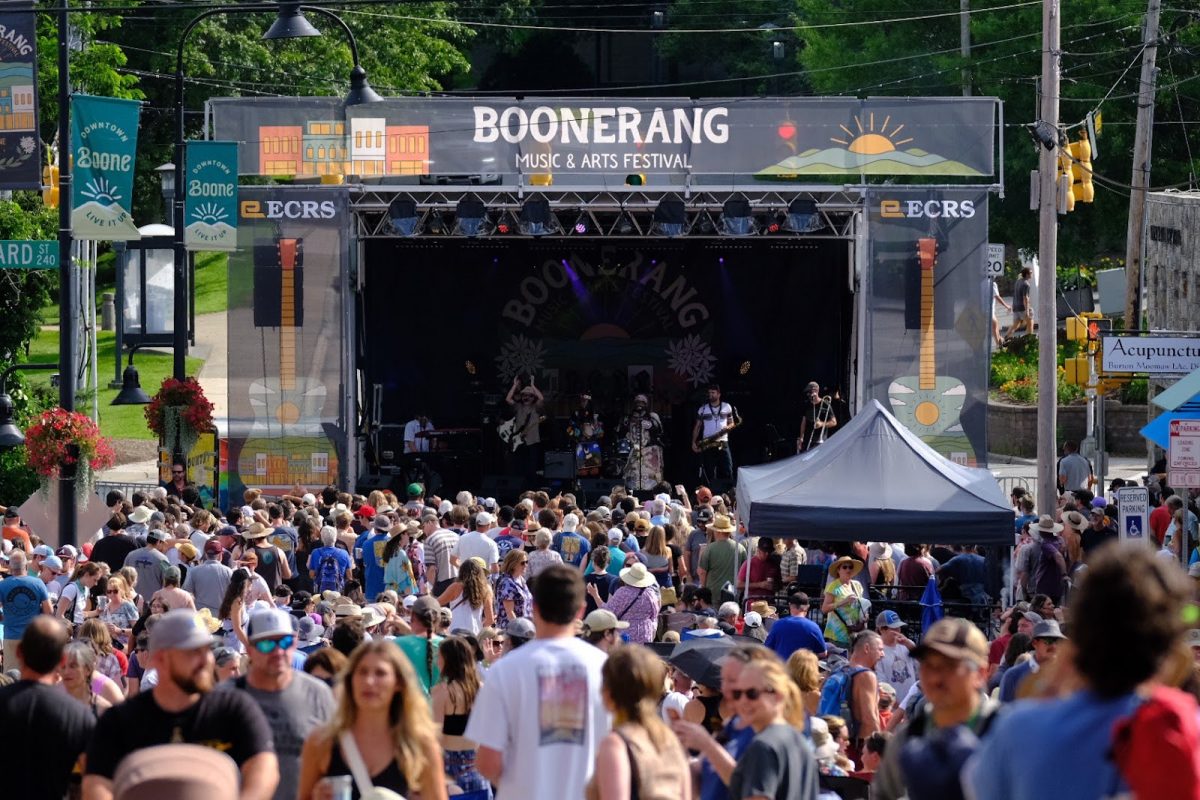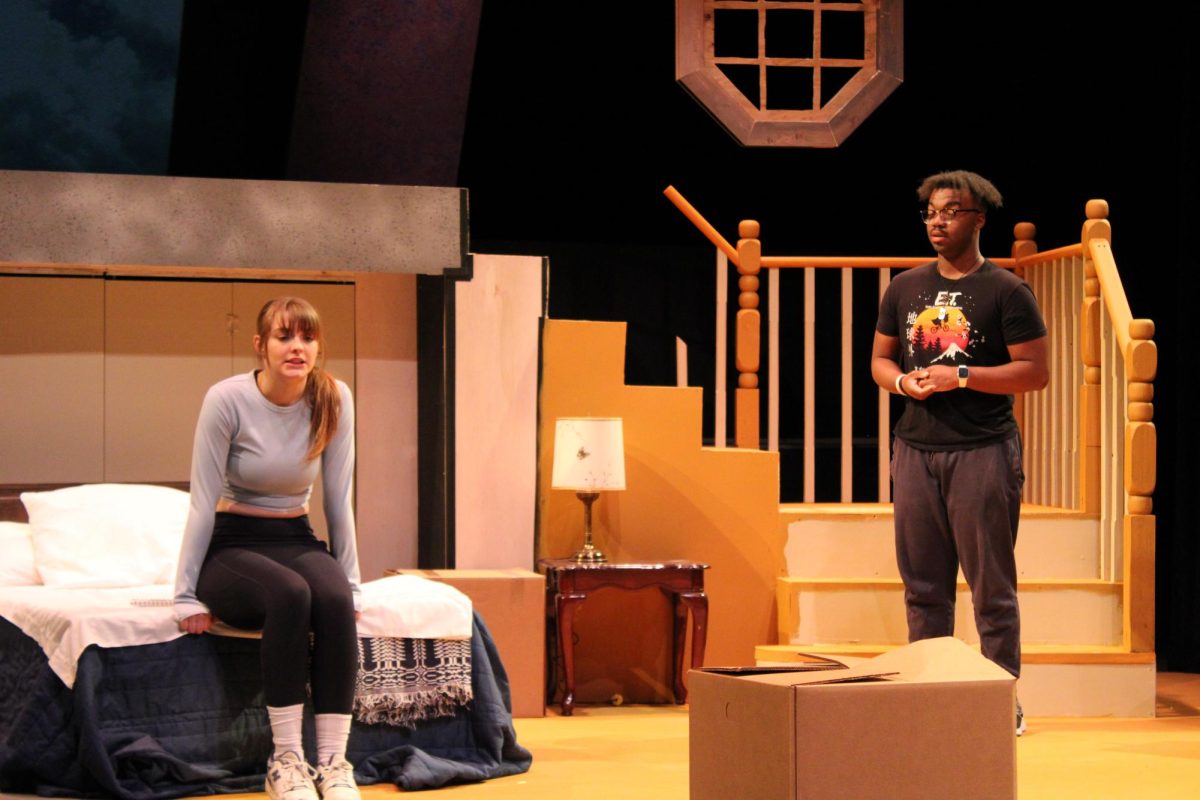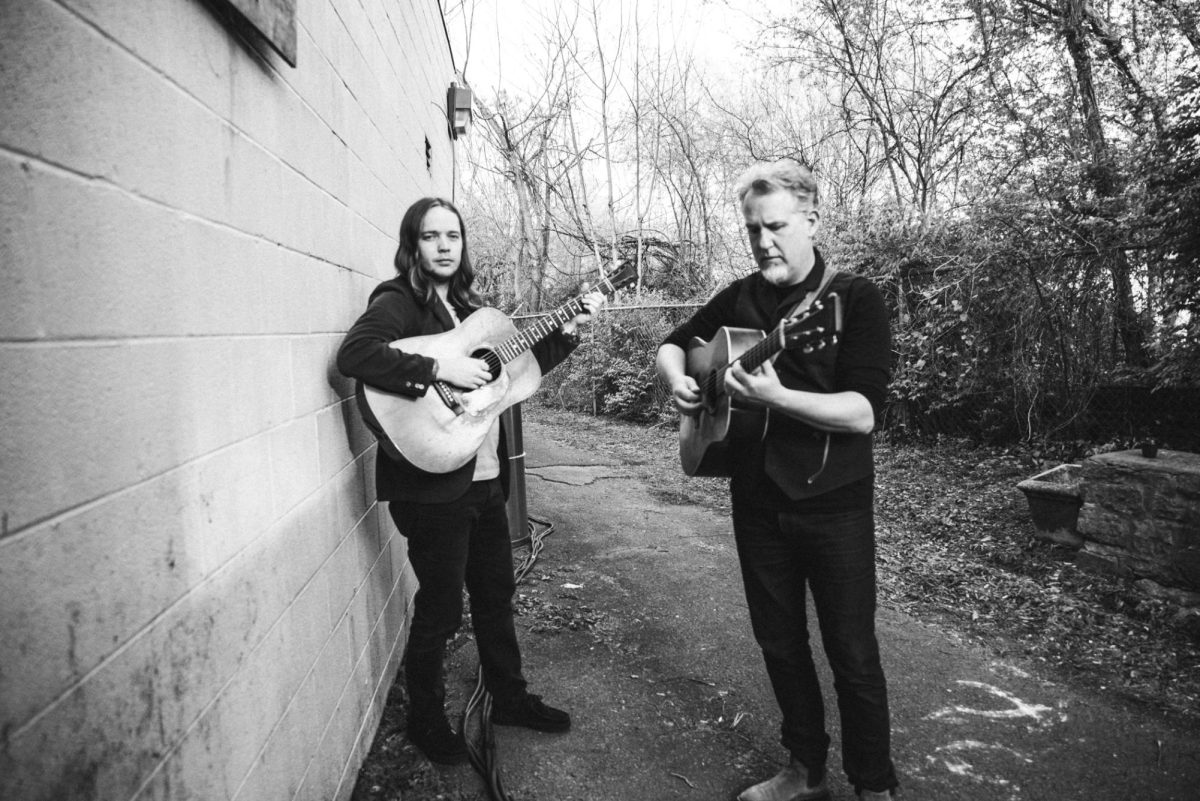The Appalachian Young People’s Theatre performed an adaptation of the Brothers Grimm fable, “The Fisherman and His Wife,” by Larry and Vivian Snipes on April 11 and 12 at 7 p.m. in IG Greer Hall with a matinee showing on April 13.
Directed by Gordon Hensley, the show featured a twist that brought the audience into the magic of the stage.
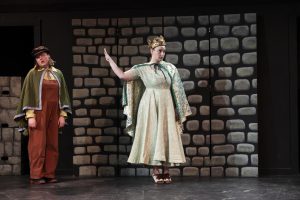
As audience members took their seats, they immediately noticed the set expands beyond the stage to the walls behind them. Before the show began, cast members came out in character and explained how the audience would participate. This included using arm movements to mimic rippling and crashing waves, shining dishes, drumming on cue and making chicken and duck noises. After this, the lights dimmed and the show set sail.
“The Fisherman and His Wife” tells the story of a fisherman who loves his simple life — until his wife, Isabelle, decides she is no longer happy. One day, while fishing, he catches a magical flounder that grants him three wishes. These wishes are quickly used as Isabelle asks for more and more, until finally the fisherman wishes for her happiness. In the end, everything returns back to normal.
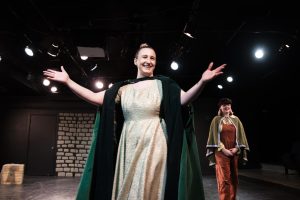
Sophomore theatre education major Whitney Dyer played The Fisherman, a happy husband who is content with his simple life of fishing. Dyer was able to connect her character back to living in the countryside of rural Appalachia, and also draw inspiration from her great grandmother.
“I loved being at her house, and the way that it made me feel is very nostalgic and poignant to me,” Dyer said. “I’ve really been able to channel that and it’s actually kind of beautiful ‘cause I’m like, I get to honor my great grandmother and just the life that she led and the way that it made me feel was really awesome and now I get to bring that to the character and through his life.”
This emotion carried into the audience, which reacted with a sense of curiosity and familiarity as the story unfolded. One character specifically worked to evoke this emotion for the viewers, the Fish, played by junior theatre education major Lauren Huneycutt.
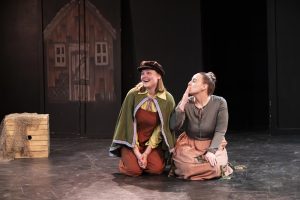
“The flounder is the magic of the show,” Huneycutt said. “It’s just fun to be able to make that for them and like, create it through my movement and through playing pretend.”
The audience was invited to play pretend with the cast members through the show’s interactive twist. Cast members walk through the audience, encouraging verbal and physical participation. In some scenes, they asked audience members to act as props — like a log or a crab. This was all led by the cast members, but specifically the Storyteller — an omnipresent character who guided the audience through the show played by Ava Dixon, a junior theater education major.
“I played the storyteller and so when I talk about the water and the ripples, I’m like wiggling my hands and we’re trying to get them to participate like ‘show you’re with the water,’” Dixon said.
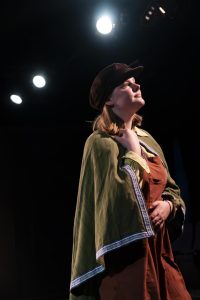
Some cast members agreed one of their favorite interactive portions of the show is when the Fisherman’s Wife, played by senior theatre education major Sara Stone, prompted the audience to make chicken and duck sounds to mimic her newly-wished farm.
“Through our show, our hope is to keep the kids in it while encouraging them to do motions and do vocal work that adds to the production,” Stone said. “Everybody in there comes in a viewer but walks out an actor, which is really awesome.”
The show closed with the actors do-si-doing to sea shanties that lit up the room and electrified the audience. The actors’ infectious energy makes it surprising the voyage to get to there was anything but smooth sailing.
The Appalachian Young People’s Theatre is a longstanding tradition in App State’s Department of Theatre and Dance, with this being their 53rd year Hensley said.
The class usually tours across Western North Carolina, with the students taking a van, their set and costumes to different schools to perform. This year, however, the class was unable to tour due to a smaller group, along with other factors.
“We lost a lot of AYPT history this semester,” Dixon said. “Everything was kept in a closet in the Greer Studio Theater, and during the hurricane, the pipe burst and no one realized until January when we went to open it up. It smelled terrible.”
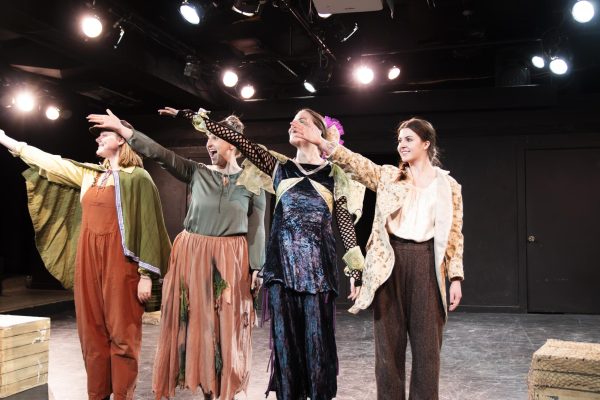
Huneycutt said the cast spent days scrubbing clean any wood and metal they found to salvage, with any cloth in the closet being ruined completely. The cast spent even more time creating new costumes, painting the sets and helping with sound design.
“So, it’s not only four actors in the show, but it’s four technicians who have had to do things that they haven’t had to do in years, but it’s preparing all of us to be able to direct and teach children, especially young audiences,” Stone said.
Despite swimming upstream all semester, losing nearly all 52 years worth of the program’s costumes and set pieces, the cast was able to find a buoy on the horizon.
“I honestly think it brought the cast together because of the days where we had to go and spray vinegar and clean all the mold off of the stuff that was salvageable,” Stone said. “I mean like we spent a day smelling like feet all together.”
A sense of community has been established between the four castmates as they have overcome each obstacle together as a team; all they had was each other.
“There’s only so much you can do and I think it shows our resilience and I think it’s beautiful that we were able to create something that way,” Dyer said. “We don’t have anybody to be on book and say you’re saying this line wrong or this line wrong, or keep us organized. It’s kind of all up to us.”

